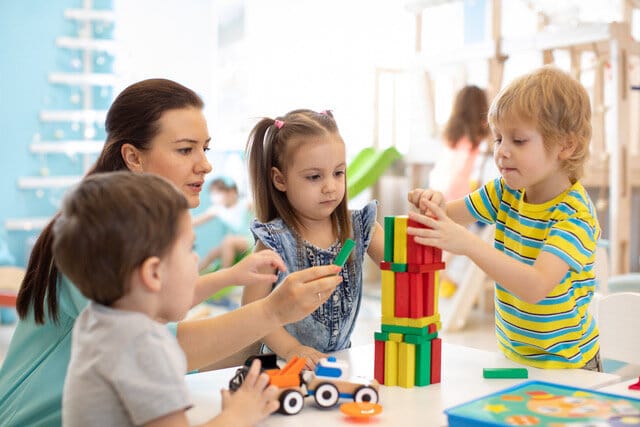It’s 2020, and research shows that only 40 percent of the world’s population is monolingual (speaking one language fluently) compared to the 43 percent who are bilingual. So, why should your child/ren be left behind? Learning a new language is important in the global village, and ensuring your child can converse in a second language is absolutely the right way to be deliberate about setting them up for success in things like: career opportunities, open-mindedness, curiosity, tolerance and travel!
Especially since it goes without saying that fluency in a second language is to one’s advantage at any age. It does seem reasonable to assume that the earlier the process of learning a new language begins, the better, right? We totally agree. How, then, does one raise a bilingual child?
Here are 4 strategies you can employ for second language acquisition for your child:
1. Engage in interactive language classes for your budding bilingual child
Interacting in the second language with someone who knows it well is the number one way for your child to get accustomed to a new language. Children are more daring and thus less likely to feel embarrassed by a mistake, as they have no prior experience with shame when it comes to expression. They simply try out a new word, whether it makes sense or not.
Also, you should make learning child-centered, where the language is learned by using things that kids find interesting. An expert on bilingual education, Lynn Malarz agrees that bilingual learning takes place in a space in which learners focus on tasks and activities of interest to them and use language as a tool to get things done (i.e., very little actual discussion of language). Learners’ interests and needs serve as the basis for learning activities; small talk, jokes, and tall tales are not only tolerated, they are encouraged, and not just at “sharing time” but throughout the day.
As adults, we know that no amount of teaching a person about swimming is going to ensure that they learn how to swim. Until we see that person immersed in a body of water and not flailing about, we know nothing. Well, just as immersing a person in a pool of water is the most effective way to teach someone to swim, similarly, it makes a world of difference if the child is immersed in an environment where the desired language is being constantly spoken. This, of course, will help the child to quickly assimilate to and accept the new language as a way of getting what they want.
2. The nanny as a bilingual teacher
Another smart move could be to employ a nanny who speaks a second language. The nanny should be aware that one of their roles is to impart that language to the child. There needs to be a solid agreement that only the second language be spoken. That way, they can be deliberate about it. It will mean that the child is learning that second language in an environment which is very familiar and non-threatening, and they’ll also be talking about everyday things, which will expose the child to useful, everyday vocabulary – just like the first language – this is the goal!
3. External stimuli for your bilingual child
Books, music, games and various toys can be used to increase the child’s curiosity and interest him or her towards language engagement. If the child is consistently interacting with their favourite doll, which speaks to them in say, Spanish, then the child will over time learn these words and become comfortable using them in an informal, everyday setting. Having the child watch and/or listen to media programs with bilingual content also works wonders in facilitating the normalcy of the second language – not to mention other friends that speak the language. And books, simple enough in content and language, will help him or her to become more fluent in the language.
4. Vacations, trips and camps
There are opportunities for children to attend immersion camps in almost any language. Even better, sign up for a NON language camp in another country, so that the focus is not language, and so the other children WILL NOT speak your child’s first language. The conscientious parent will look for ways to engage the child in attending a one- or two-week language camp. Where it’s possible and affordable, the family may opt to take a vacation in a country where that second language is spoken to expose the child to the nuances of the language and the culture. What better way to learn French than by exploring the beaches of Nice?
Benefits of Bilingual Exposure
Bilingual development has been shown to have a positive effect on the cognitive development of children. Studies show that bilingual brains look different from those of people that only speak one language. Being bilingual activates pathways in the brain – this has been proven to increase your attention span, memory and ability to multitask. Also, bilingual children generally outperform their classmates in all areas by the age of seven. Speaking a second language also expands the opportunities for studies abroad and opens up the chance to apply to universities across the world.
If you’re interested in weekly immersion classes for your child, age 4 – 16, reach out to us at www.trufluencykids.com. Our lessons are available every 30 – 45 minutes throughout the day, where conversation and fluency is the focus, for ultimate success in our global lives.


